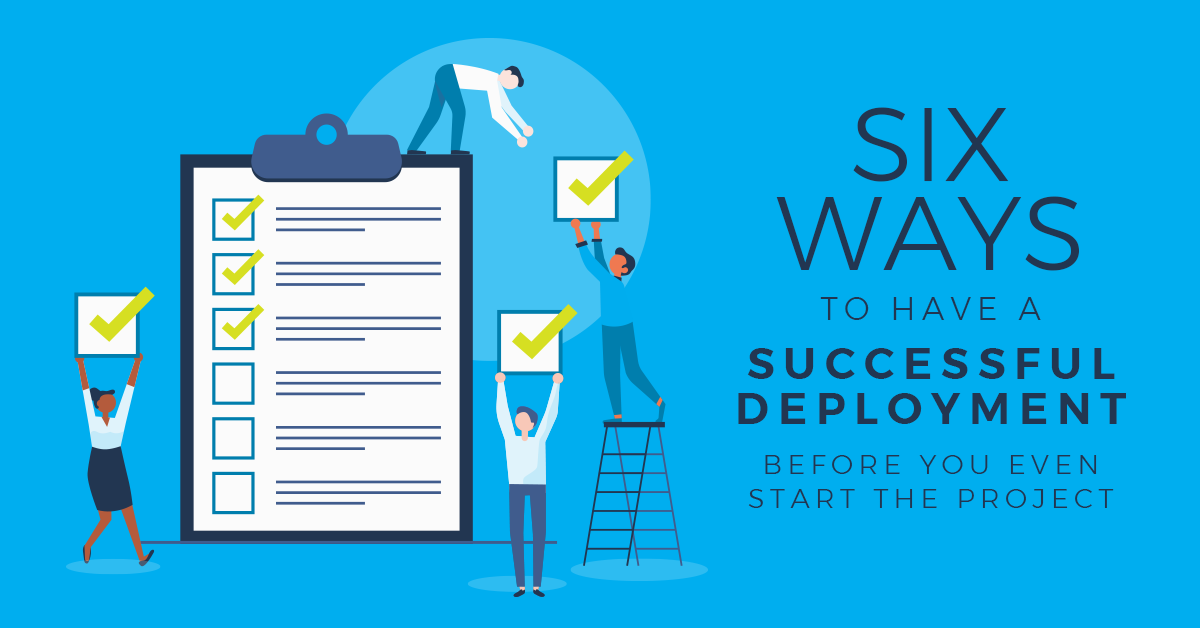While working with clients on a daily basis implementing Cornerstone OnDemand, I’ve had a lot of opportunity to see what worked well on a client’s deployment, and what may have worked better if we had the chance to do it over again. Clients that have taken steps to thoroughly plan their project, stick to their planned scope, and are open to suggestions tend to have the most successful deployments. Here are a few ways that some clients set up their deployment for success before they even begin the implementation process.
1. Start Thinking About Organizational Change… Early
Whether you are moving from a paper talent management process to a new online system or replacing an existing online system, your talent management deployment will need some level of organizational change. You should begin thinking and planning for this before you even engage your new vendor. You may not yet know the details of the new system to understand the full impact of the change, but you are likely familiar with your current process, who it impacts, and why someone made the decision to move to a new vendor. If you don’t know these things – find out.
By setting a foundation for change, you can build on this foundation throughout your implementation and better plan for successful organizational adoption of your new system.
2. Stop! Don’t Nail Down That Go Live Date Yet
It happens on almost every implementation project: The first time the client meets the vendor, they already have a date that they MUST hit for go-live. Sometimes it is for good reason, such as fiscal budgets or an expiring contract with a prior vendor. Regardless of the reason, picking a hard go-live date before understanding the resources and effort needed for an implementation may set your team up for a highly stressful and ineffective deployment.
Work with your vendor to determine what is typically required to complete an implementation of your size and how long it takes the vendor to turn around their deliverables.
Determine what resources you have available to support your deliverables and your ability to allocate those resources to support your project. This will drive a more realistic go-live date. If that date still doesn’t work, you may need to evaluate your scope or whether you need more resources to complete the work more quickly.
3. Define an Effective Scope
Does that realistic go-live still not work for you? Maybe you think about a phased approach. Determine if you really need to deploy all included features, integrations or even all organizational audiences in your go-live.
Reducing your scope for the initial go-live may reduce the time and/or resources needed to meet your go-live date. You can then address the additional features, integrations and/or audiences in another phase.
Besides meeting a date, think about what scope will set your audience up for successful adoption of your system. Sometimes introducing too many features at go-live can overwhelm your audience and cause them to feel the new system is too complicated. Instead, focus on what is truly necessary for go-live and what organizational pain points you can address that might encourage user adoption. Go for those quick wins first and add additional capabilities later.
4. Include Key Decision Makers
I’ve had clients that have either intentionally or unintentionally left certain leaders in their organization out of the loop about their implementation for different reasons. In either case, once this leader becomes involved, it can cause a major disruption to the implementation. Perhaps the person has knowledge that would have been key to making a decision earlier in the project, they have a different vision than the project team, or they are simply upset that they were not consulted.
Be sure to determine all key stakeholders before the project begins.
By doing so, the project team can be better informed on future decisions and there will be an opportunity to work out any differences before the project begins, which will save time and support a unified approach for the project goals.
5. Align Your Business Process to the System’s Capabilities
Some clients become married to a business process that they have had for years just because that is the way it has always been done. Sometimes this is driven by the fear of having to change the behavior of so many people that are involved in and are comfortable with the current process.
Let’s face it, not all systems are built to mimic your existing process.
This might be because your process isn’t that efficient, and the system is designed to handle your process in a more effective way. It is best to discover this before you begin implementing the system so you can build a strategy for the future state of your process. Take the time before you begin the project to define the processes that will be impacted by your new system. Do a thorough analysis of the system capabilities to determine if changes to your process will be necessary in order to work in the new system.
6. Design a Solid System Governance Structure
This is especially important if you are an organization with a decentralized talent management process. Cornerstone OnDemand is highly flexible and can certainly support decentralized organizations. To effectively manage one system with many admins will require a solid governance plan to avoid stepping on each other’s toes when administering the system.
Even if you are not a decentralized organization, it is helpful to define your governance process for managing different levels of administration in the system, software release management, and internal support of your users.
Experience the Difference for Yourself
The expert consultants on the eSkillz Professional Services team have years of experience providing end-to-end support for successful system deployments: we’ll guide you through these proven recommendations, align with and understand your goals and requirements, and then seamlessly drive your implementation, executing hands-on configuration informed by our best practice knowledge of your system. We’d love to partner with you!

